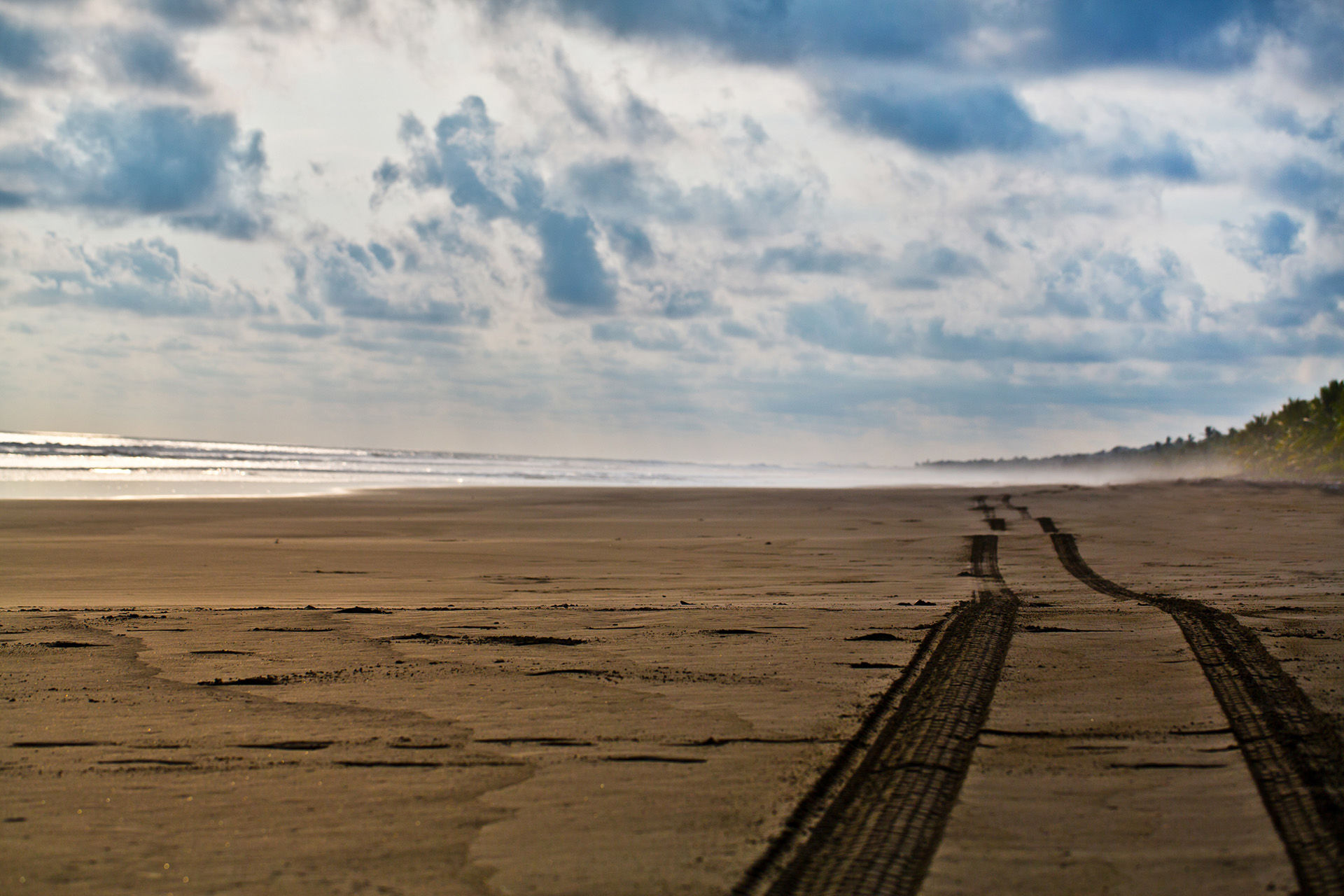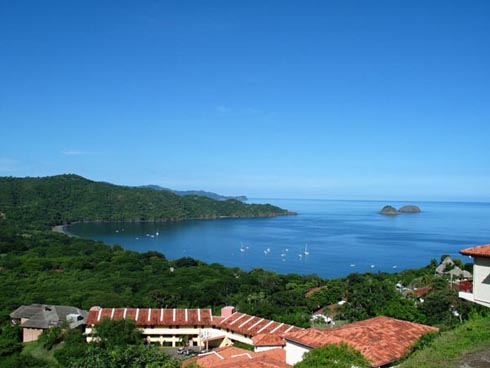
Offroad Adventures in Field and Forest
A flick of the throttle carries you into the forest, and a whole new world. You are enveloped in a lush canopy of jungle green where monkeys and toucans perch on overhead branches and iguanas skitter across the path. After splashing through a shallow riverbed, a winding ascent leads to sweeping views of a distant volcano. Next, comes a dash across open fields where you pass mounted sabaneros— Costa Rican cowboys. Rest stop refreshments include bananas and papaya picked fresh from the land, then it's on to a waterfall for a cooling swim. These are just some of the reasons why ATV tours are a favorite activity in Costa Rica.
Highlights
- Best for: All travellers from budget to luxury with a love of nature and adventure
- Best season to visit: Year Round, drier November - May
- Weather: There is minimal seasonal variation in air temperatures, with highs reaching near 90 and lows touching 70 at night. The wet season runs from May through November, drier months from December to April bring lower humidity
Things to Do
- Cultural Activities
- Diving
- Hiking
- Paddle Sports
- Spa and Wellness
- Ziplining
Costa Rica Information
Offroading in Costa Rica Overview
The Guanacaste region is a favorite with tour operators, as it offers a diverse range of touring adventures that can be done as an easy day trip from coastal resorts in the Tamarindo and Papagayo regions. Tours showcase a variety of ecosystems from coastal jungles to rural landscapes and highland forests.
Costa Rica Offroading Tips
The modern ATVs used by tour operators are easy to operate, with automatic transmissions and stable tracking. Novices can typically learn the basics in a few minutes, and tour organizers will usually provide riders with instruction and a chance to practice with the machines before setting off on a trail.
Best Places for Offroading in Costa Rica
From La Fortuna, riders can ascend into cloud forests, cross shallow jungle rivers and stop for swims under a waterfall. A tour through Horizontes Reserve showcases a restored dry forest ecosystem and provides sweeping views of la Vieja and Miravalles Volcanoes. Riding the trails and pastures of Aromal Ranch gives a glimpse of Costa Rican cowboy life. A rainy season trip into Palo Verde National Park provides plenty of muddy, splashing fun.
What to Pack for Offroading in Costa Rica
Most all operators will insist on closed-toe shoes, while the choice of shorts or long pants is usually up to the rider. On narrower trails, long pants may be the best choice to avoid swipes from overhanging brush and leaves, but shorts will allow bare legs to dry faster and clean up if riding through mud and water. Tour operators provide helmets, and sunglasses are a good idea for eye protection.
Resorts

Costa Rica
Villas Sol Hotel & Beach Resort
PLAYA HERMOSA, GUANACASTE All-inclusive resort with views of Gulf of Papagayo. Dive services provided by Bill Beards Preferred Costa Rica Dive Operators. High speed boats to Catalina and Bat Islands for diving. Two restaurants and bars, including swim up pool bar.
Optional add-ons for Watersports Activities and Topside Activities available in the shopping cart after room category is selected.
Book on-line or Contact Caradonna Adventures at 800-330-6611 or email us sales@caradonna.com.
See Packages & Learn More
Passport and/or Visa Requirements
A valid passport is required for entry that must be valid for length of stay. No visa is required for stays less than 90 days. The passport must have at least one blank page for the Costa Rica entry stamp. There is a departure tax of approximately $29 U.S. which should be included in your international ticket. Check the entry/exit requirements here.
Immunizations
There are no immunizations required for entry into Costa Rica, although you should check with your doctor and with the Centers for Disease Control and Prevention for other recommendations.
Culture and Customs
Costa Rica is known as the safest and most prosperous country in Central America. It is home to a large community of North American ex-pats, but also retains its distinctly Latin culture, which includes a relaxed attitude to schedules that is known as “Tico time.” Laid back is not the same as uncaring, however, and Costa Ricans are known for taking pride in their appearances and their work. A well-developed road system connects major destinations, but much of the country's central highlands remain wild and protected within national parks. Within a day's drive of beach resorts at Guanacaste lie the slopes of Arenal Volcano, the Monteverde Cloud Forest and Palo Verde National Park. Costa Rica is the eco-adventure capital of the Caribbean. Surfers come from around the world to ride famous breaks from Witch's Rock to Pavones. Coastal lodges are filled with fishermen seeking light tackle challenges with roosterfish or tug of war with a marlin. Forests draw birders, hikers and naturalists, and there are more than a dozen rivers offering whitewater rafting thrills. More relaxing experiences await at hot springs, where spa treatments and soaks in mineral-rich volcanic water provide a soothing end to an active day.
Electricity, Phone and Internet Access
The standard in Costa Rica is the same as in the United States: 110 volts AC (60 cycles). Some electric outlets only have 2 prong sockets, so an adapter may be needed for 3 prong plugs.
Costa Rica has an excellent phone system, and the country code for dialing is 506. Check with your cell phone provider for international data and voice plans and costs.
Many resorts and restaurants offer WiFi.
Water Quality
Although the water in Costa Rica is generally safe to drink, water quality varies in some cities. It would be best to use bottled water and avoid ice.
Language & Currency
Spanish is the official language of Costa Rica, but English is widely spoken. The Costa Rican currency is called the “colon”. Check the current exchange rate here. Many businesses will accept U.S. Dollars and major credit cards are widely accepted.
Time
Costa Rica is on Central Standard Time, 6 hours behind Greenwich Mean Time (-6 GMT). Costa Rica does not use daylight saving time, so the time difference is an additional hour April through October.
Location, Size and Population
Costa Rica is located in Central America, bordering both the Caribbean Sea and the North Pacific Ocean, between Nicaragua (to the north) and Panama (to the south). Costa Rica encompasses a total of 19,700 square miles (51,100 square kilometers).
The population of Costa Rica is 4.9 Million (2015) with approximately 350,000 living in the province of Guanacaste.